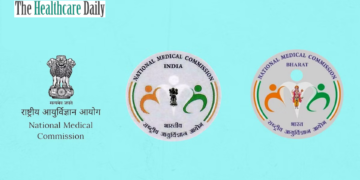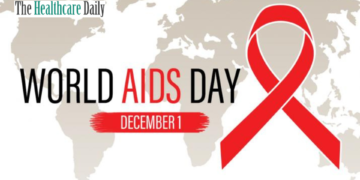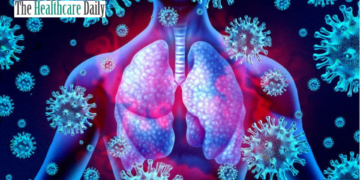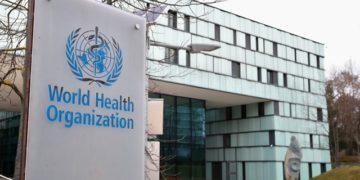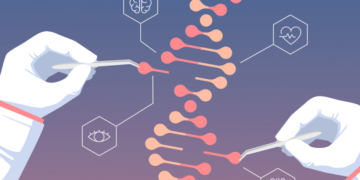In today’s fast-evolving healthcare landscape, Active Pharmaceutical Ingredients (APIs) stand as the unsung heroes, facilitating the transformation of raw materials into life-saving medications with a level of sophistication and precision that is nothing short of remarkable.
These potent compounds represent the cornerstone of pharmaceutical formulations, ensuring not only the effectiveness but also the safety of a vast array of drugs.
In this article, we embark on an in-depth journey into a diverse universe of APIs, understanding the different array of their types, and manufacturing processes, we will also delve into challenges that beset the API supply chain, their innovative solutions which are not merely adapting but truly reshaping the future of healthcare!
Types of Active Pharmaceutical Ingredients (APIs)
APIs encompass a staggering array of types, each tailored to serve a specific role in the intricate and multifaceted world of drug development and administration. A profound understanding of these classifications is fundamental for professionals in the pharmaceutical field and healthcare enthusiasts alike.
Synthetic API
These compounds are prepared through intricate chemical synthesis, ingeniously mimicking the structure and functionality of natural molecules with precision. They reign supreme in the pharmaceutical industry, celebrated for their unparalleled consistency, cost-effectiveness, and adaptability.
Biological APIs (Biopharmaceuticals)
Emerging from living organisms such as bacteria, yeast, or mammalian cells, biological APIs encompass an expansive array of proteins, peptides, and nucleic acids. They have not just revolutionized but rather changed the treatment landscape, particularly in fields like cancer and autoimmune diseases, where their potency and specificity shine with brilliance.
Highly Potent APIs (HPAPIs)
These are APIs characterized by their extreme potency, necessitating not just specialized but almost alchemical handling due to their inherent toxicity. HPAPIs find their niche in the treatment of diseases like cancer, where even minuscule doses bring a profound and often life-saving therapeutic impact.
Top Active Pharmaceutical Ingredients
In the vast realm of APIs, certain ingredients have ascended to prominence, wielding immense influence in the realm of healthcare. These are the top APIs that have sculpted not just the medical landscape but also the course of human health and well-being:\
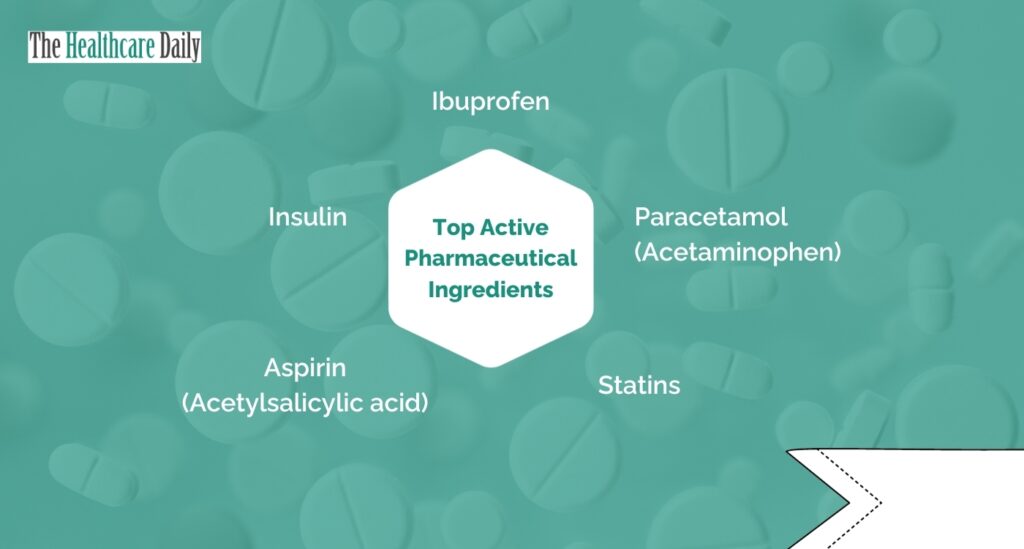
Ibuprofen
A ubiquitous nonsteroidal anti-inflammatory drug (NSAID) renowned not only for its prowess in alleviating pain and mitigating inflammation but also for the sheer volume of lives it has positively impacted.
Paracetamol (Acetaminophen)
A widely recognized and universally trusted pain reliever and fever reducer, Paracetamol stands as a stalwart presence in countless over-the-counter medications, offering solace to millions in distress.
Aspirin (Acetylsalicylic acid):
remarkably versatile medication with applications spanning from pain relief to its anticoagulant properties, playing a pivotal role in cardiovascular health and preventative care.
Insuli
The cornerstone in the management of diabetes, insulin represents not just a breakthrough but an ongoing triumph in biological API development, crafted through the intricate marvels of recombinant DNA technology.
Statins
These cholesterol-lowering titans have not just redefined but rather reshaped the landscape of heart disease management, pioneering the path to healthier hearts and longer lives.
Active Pharmaceutical Ingredient Manufacturing Process
The manufacturing process of APIs is very diverse, and regulated, and encompasses several phases that are as much art as they are science:
Chemical Synthesis
For synthetic APIs, this phase is an intricate symphony of chemical reactions and purification processes, where raw materials undergo a metamorphic transformation into the desired compound, a journey where precision and purity reign supreme.
Fermentation
Biological APIs unfold through the marvels of fermentation, harnessing the metabolic alchemy of microorganisms to produce intricate molecules that are the very building blocks of life-saving therapies.
Extraction
Natural APIs are coaxed from the bosom of plants or animals through specialized extraction techniques, unveiling the therapeutic gems hidden deep within the natural world, a journey akin to treasure hunting on a microscopic scale.
Formulation
Following the acquisition of APIs, these compounds are deftly and scientifically formulated into diverse dosage forms such as tablets, capsules, or injectables, meticulously crafted to meet specific therapeutic needs and deliver precision in treatment.
Quality Control
The manufacturing journey is punctuated by relentless quality control checks that resemble strict inspection, ensuring that the end product adheres not merely to standards but to the unyielding principles of safety and efficacy
Challenges in Supply and Innovative Solutions

The pharmaceutical landscape confronts a myriad of challenges in the supply of APIs, challenges that reverberate not merely within the industry but throughout the realm of patient care and global health. Below, we scrutinize these challenges with a magnifying glass, unveiling innovative solutions that are not merely adapting to the changing landscape but truly reshaping it:
Global Supply Chain Disruptions
Events such as the COVID-19 pandemic have not merely exposed but laid bare the vulnerabilities of the global supply chain, necessitating a fundamental shift.
Forward-thinking companies are exploring localized manufacturing not merely as a strategy but as a cornerstone to reduce dependence on foreign suppliers, ensuring a more resilient and self-reliant supply chain, an evolution that marks a historic turning point in pharmaceutical supply logistics.
Quality Control and Regulatory Compliance
Stringent regulations demand not just impeccable but almost transcendental levels of quality control standards. In response, pharmaceutical companies are channelling investments not merely into cutting-edge analytical technologies but into a new era of compliance where efficiency and excellence are not mutually exclusive but rather intertwined, an evolution that marks a profound shift in the industry’s culture.
Environmental Sustainability
As environmental concerns gain not merely prominence but urgency, the pharmaceutical industry is not merely embracing but rather wholeheartedly adopting sustainable practices as a way of life.
These practices encompass not merely the adoption but the embodiment of green synthesis methods, the reduction of waste, and the conscious incorporation of eco-conscious manufacturing processes, an evolution that marks a commitment to healing not just humans but the planet as well.
Cost Pressures
Escalating development and production costs, rather than being a deterrent, are serving as catalysts for change within pharmaceutical companies.
These companies are exploring not merely more efficient but transformative manufacturing techniques, fostering not merely collaboration but a culture of innovation that optimizes resource allocation and maximizes the impact of every investment, an evolution that reshapes not merely businesses but the very essence of the industry.
Shortage Management
To mitigate the risk of API shortages, advanced forecasting and inventory management systems are not merely being deployed but perfected to the level of an art form, ensuring that critical APIs remain not merely consistently but predictably available, an evolution that ensures the continuity of care even in the face of unpredictable challenges.
Patent Expirations
As patents for blockbuster drugs approach expiration, companies are not merely redirecting but reinvigorating their focus towards intensive research and development efforts, seeking not merely innovation but the creation of truly transformative, patent-protected APIs that sustain not merely a competitive edge but a legacy of positive impact, an evolution that heralds a new era of healthcare innovation.
Data-Driven Decision-Making
Data analytics and artificial intelligence are not merely being integrated but are fundamentally reshaping supply chain management, facilitating but propelling predictive maintenance, optimizing supply chain operations, and ushering in an era of insight-driven decision-making, an evolution that transcends the conventional boundaries of the industry.
Collaboration and Partnerships
Strategic alliances are not merely becoming increasingly common but rather integral, as pharmaceutical companies forge symbiotic relationships with suppliers, contract manufacturers, and research organizations. These alliances, far from being mere collaborations, are fostering ecosystems of resilience and innovation, an evolution that is the very essence of a healthcare revolution.
Conclusion
Active Pharmaceutical Ingredients (APIs) are not merely the unsung but the invisible architects of modern medicine’s victory. They are not only the invisible hand but the guiding force that transforms not just chemical compounds but human lives, not merely alleviating suffering but extending and enriching human life itself.
As the pharmaceutical landscape not merely continues but accelerates its evolution, APIs are not merely evolving but rather perpetually pioneering, pushing not merely the boundaries but the very frontiers of what is possible in healthcare.
By unravelling not merely the intricate but the awe-inspiring range of API types, surveying not merely the influential but the transformative players, illuminating not merely the manufacturing but the alchemical processes, and dissecting not merely the supply chain but the forces that shape it, we come to appreciate not merely the incredible but the profound journey these ingredients undertake from the laboratory bench to our medicine cabinets.
It’s a journey that encapsulates not merely human ingenuity but the indomitable spirit of human dedication and commitment to advancing healthcare, not merely for the betterment but for the profound transformation of all!



